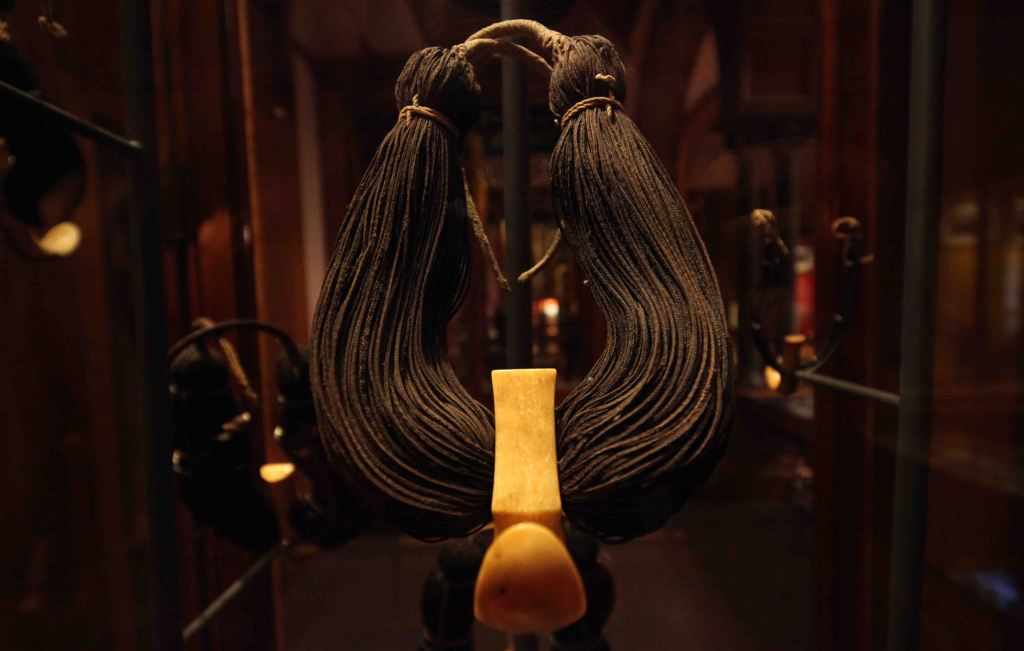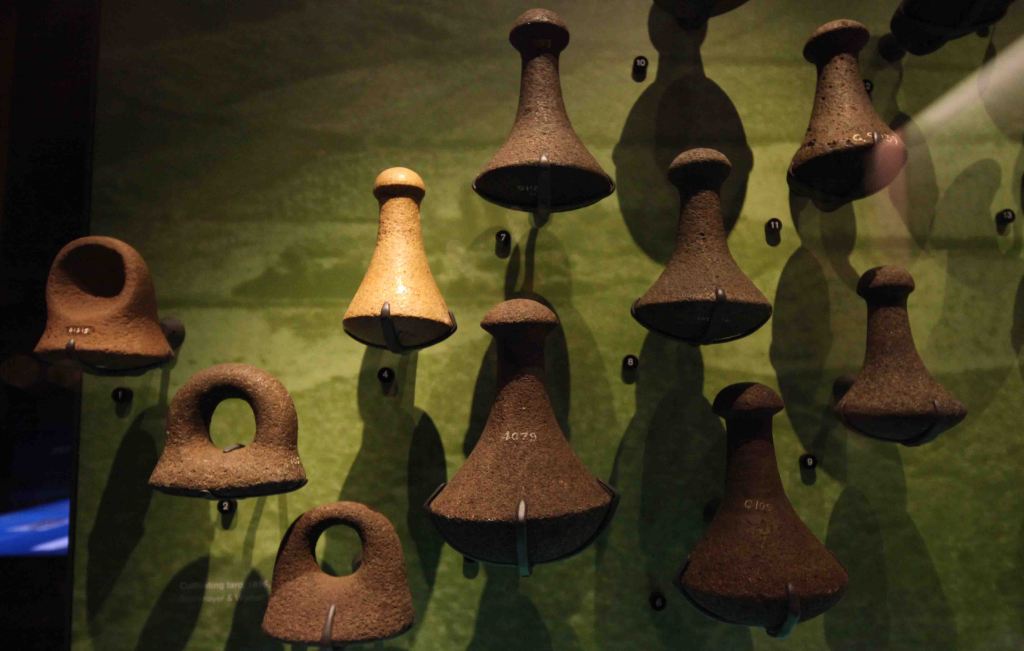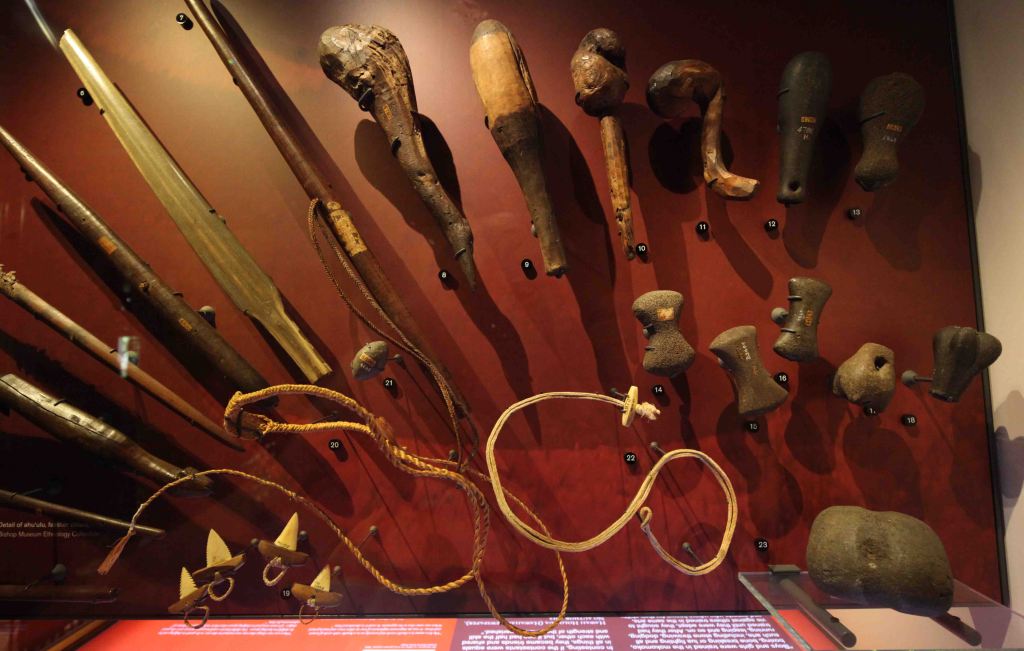Bishop Museum
A visit to the Bishop museum is essential for anyone interested in Hawaii and its history. It is easy to spend at least half a day there since there are many activities and much
to see. The museum is open and relaxed with a lot of areas, both indoors and out, to sit and rest. There is a full programme of daily activities, and all are free with admission http://www.bishopmuseum.org

The entrance to the museum from the parking lot. Free parking.
To the right of the ticket office. The Planetarium has four shows daily: two programmes shown twice. When we visited, the programmes were The Sky Tonight
and Wayfinders: Waves, Winds and Stars. The second includes a documentary film about Hokule’a, a double hulled voyaging canoe built in 1974 that made two
round trips to Tahiti using traditional Polynesian navigation. The presentation includes a lesson on a Hawaiian maps of the skies and how to navigate by stars.
For more about Hokule’a http://www2.hawaii.edu/~adamson/vol43a1.html
The Hawaiian Hall, the main building.
The three story Hawaiian Hall Gallery shows the best of the museum’s collections. You can take a lift to the top floor from the Atrium and walk down.
The Atrium Lobby directly in from the main entrance of the Hawaiian Hall. There are scheduled presentations about Hawaiian culture. Here about story telling and oral traditions. Another is an interactive presentation about hula and song. The lift is just to the right of the Atrium entrance and leads to the top floor of the central display room.
Ni’ihau shell leis on show when we visited. The Joseph M Long Gallery, to the right of the entrance, leading to the Hawaiian Hall Gallery, has special exhibitions.
The shells that come from the island Ni’ihau are considered the best and finest. Using them for leis is an old art.
Made from Ni’ihau shells.
The room to the left of the entrance to the main hall contaisn a display of Kahili, feathered standards.
The Kahili (kah-HEE-lee) have been used since ancient times. Hawaiian nobility use kahili to show status, lineage, and family ties.
The paintings are of Hawaiian royalty Kamehameha I (far left), II, III, IV and Kamehameha V.
The Hawaii hall has the main displays. In the foreground explanations about the stages of the moon, each of which has a special name in Hawaiian.
Royal mantles sewn with bird feathers.
This feathered pa’u, a wrap-around skirt, was originally 20 feet (6 meters) long.
Feather necklace
Necklace made from whale bone and bards. Humpback whales live around Hawaii during the winter.
Ancient wood representations of gods.
Fish hooks
The phase of the moon and the activities associated with it. Deep sea fishing hook in the foreground.
Kapa, mulberry bark that has been pounded to thin cloth.
Gourds were used for storage.
Stone hand tools to pound and grind food.
One of many battles between people from the different islands. This shows the battle of Koko o Na Moku, 1738, between two brothers fighting for the right to rule Maui.
Display of old weapons
Display of games. In the back round stones discs that were used.
Surfboards have been used for many hundred years in Hawaii. This drawing is from 1831.
The museum has a collection of very old surfboard, but they are not currently on display.
A hands-on display of some treasures of Hawaiian nature and culture.
Half of the 16 panels showing the creation of the islands starting with night on the right.
The interest in Hawaiian culture is growing. More people speak Hawaiian, and children can go to Hawaiian language schools.
In the Castle Memorial Building, next to the main building, there is an exhibition about immigration to Hawaii.
There are many old photographs of conditions for the Japanese brought in to work on the plantations.
The proportion between different ethnic groups changed dramatically during the 19th and 20th century. The dark blue
section, pure Hawaiian, declines at the end of the 19th century as Japanese, Chinese, Portuguese and Caucasians increase.
By the end of the 20th century, pure Hawaiians (dark blue at the bottom) have almost disappeared.
Filipinos have started to move to Hawaii, and the largest ethnic group is Japanese (olive green).
Map of Hawaii in 1896-97
































